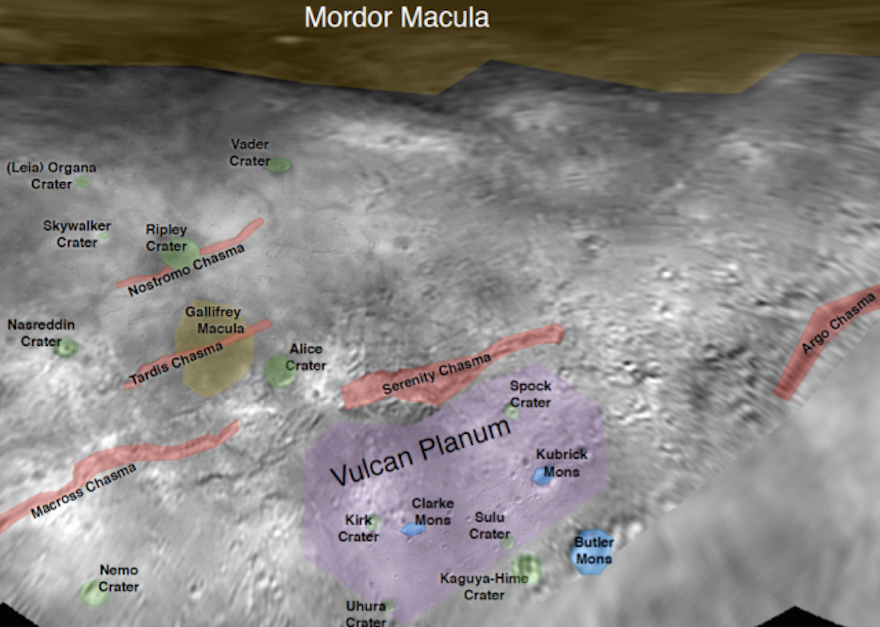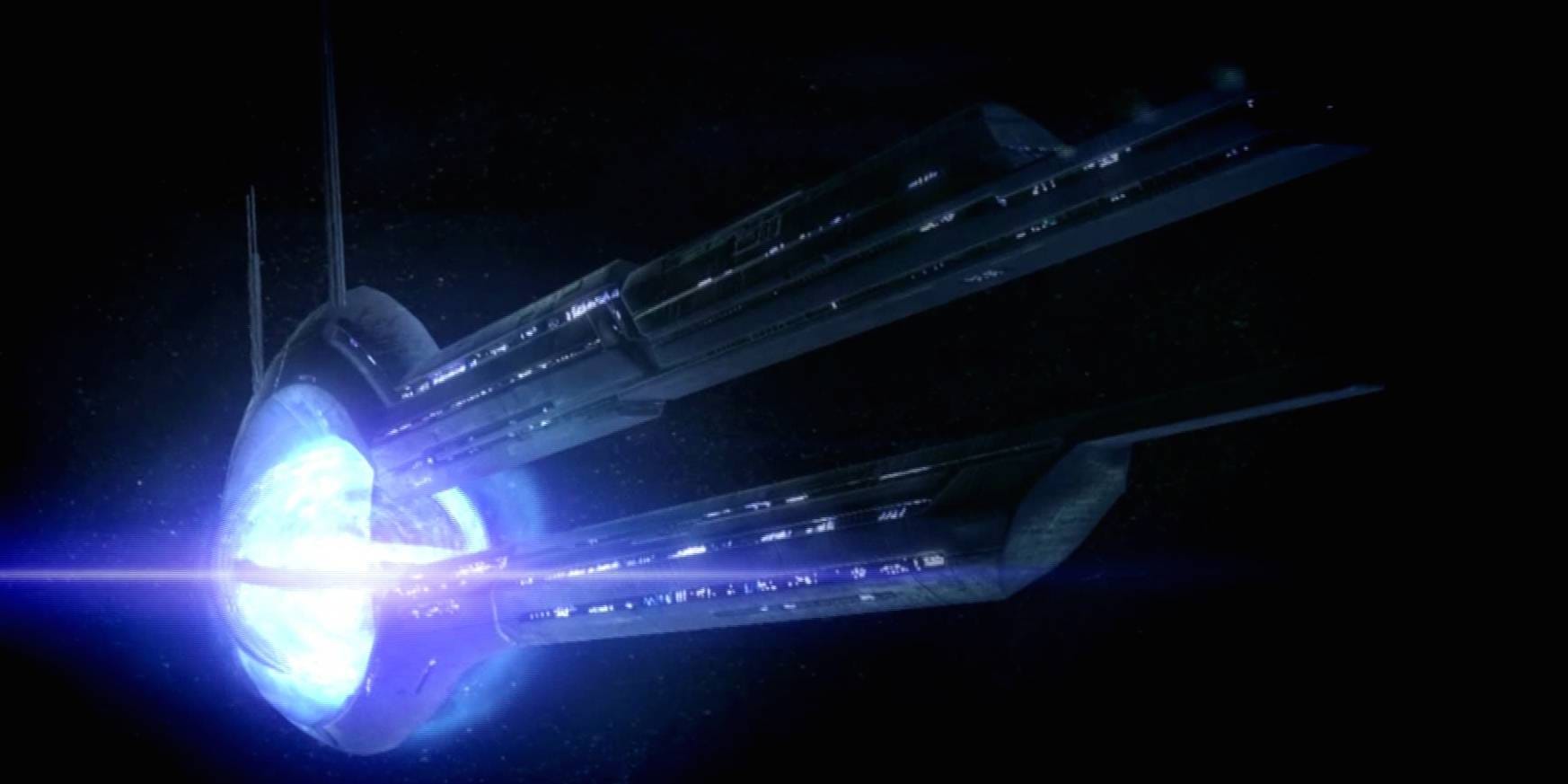The Year in Space

“Why Is NASA Exploring Pluto?
NASA sends spacecraft to other planets because exploring space is exciting.”
NASA Educational Technology Services, 2015

The Sputnik Planum,
Pluto
It emerges out of the ancient, cratered highland of the Viking Terra like a great lake, rippled with vast waves and sectioned into polygonal pools. It is of course, exceptionally dry, though hills of water ice rise up in aligned ripples like the rake marks of a zen garden. It is young, at least comparatively so, like the cheeks of a child yet to be marked with the scars and pockmarks that life accrues. Its cell-like structure is derived from the convection caused by the methane ice that lies below the thin surface. Glaciers of nitrogen flow out across it, pooling at the base of mountain shorelines like crystal oil slicks. Somehow both macroscopic and microscopic, the textures of the planum look almost as if I could reach out and run my fingers over them, the geological formations protruding through my screen as the final millimetres of a journey too vast to imagine, measureless to man.
This is a distant reading, mediated through the long-range reconnaissance imager and visible imager that protrude from the gold-wrapped body of the New Horizons probe. In January 2015, after waking from its long hibernation, the probe began its approach towards the dwarf planet Pluto. Over the course of the year it has gathered a portfolio of imagery which has crawled its way back to Earth at a rate of 1 kilobit per second, to be disseminated, multiplied, uploaded, edited, analyzed and proliferated across our many networks. There is an odd sense of ease to this process, as images of a distant planet jump readily up our news feeds, maps of alien landscapes finding themselves among the company of gossip and news, the real and the imagined.
The view from orbit is tempting, alluring, its power residing in its distant mystery
Over the course of the year, these images, and the geological features they depict, have become oddly familiar—not on a named basis, but present nonetheless, at the corners of our vision. Space exploration has been a constant feature of the news, this steady stream of images from New Horizons, depicting the underworld of Pluto and Charon, augmented by a handful of other missions and discoveries. This constant presence has somehow further muddied the real and the imaginary—with no human reference point, these machine-made images slot easily into an ecology of other machine images, computer visualisations, event simulations, test renders, “not representative of gameplay” CGI and procedurally generated worlds.
This process moves towards obvious ends—we will soon be able to pick our way across the Sputnik Planum, gazing out across its vast, untouched surface. Elite Dangerous: Horizons, an expansion to the space trading sim that seems unlikely to have been named by coincidence, adds planetary landings to the game’s map of the universe. As this map includes our home system of Sol, it is logical that over the next months Pluto will be opened up as a possible landing point. It’s worth considering that Elite Dangerous has already taken the images of Pluto captured by New Horizons and wrapped them around its in-game model, the Sputnik Planum clearly visible on the face of the distant dwarf. Like Jean Baudrillard’s iconic image of the “map that is the same size as the territory,” the referent eclipsing the original, what is the effect of one image slipping on top of another? A pixel-thin skin sent back from space recontextualized as a simulation of the object itself. The view from orbit is tempting, alluring, its power residing in its distant mystery. Touch down and the dusty rock is dead, the Sputnik Planum is just another “desert of the real.”

The Nostromo Chasma,
Charon
This split in the surface of the moon spans out from the Ripley Crater in both directions, as if the ancient impact had burst the frozen skin like that of a ripe fruit. The floor of the chasm is often in shadow, concealing the deposits that lie there among the shards of ice and perhaps a light dusting of snow. It is nothing more than a scratch on the surface, not coming close to reaching the rocky core that is encircled by an underground ocean of perpetual dark. Beyond that point there is nothing to be taken here, nothing to be exploited, the chasm is a barren scar.
However, the chasm’s name is a source of something richer, a set of connections leading into another core. Nostromo is a name shared with Ron Cobb’s iconic design from Ridley Scott’s Alien. A hunk of industrial architecture, crawling across space, a refinery floating in the void. It is an image that has started to take on a hint of reality, in the flowering of companies like Deep Space Industries and Planetary Resources. These corporations, which at first appear to be fanciful entities, have already begun to set out the first plans for industrialised space, for their own Nostromos. This year NASA revealed further partnerships with these private mining companies, designed to boost the flagging budget for space science.
The Imperialism of Nostromo is not a feature of the past
And there is another Nostromo, the one from which the ship took its name. Often considered Joseph Conrad’s greatest work, it follows the fortunes of a mining colony in Latin America, the fictional Costaguana. A critique of imperialism and its central driving force of material gain, the story revolves around a final haul of silver from a colonial mine that is tied up in the political upheaval of the indigenous people. Through distant in time and place, there is something potent about these associations. Nostromo is a man, once a rebel and perhaps a hero, who is unable to escape the imperial desire to take from the land for the ceaseless pursuit of personal fortune.
Mere months ago, the U.S senate legalized the mining of celestial bodies, marking this year as a historic turning point in the industrialisation of space. Though the planets and asteroids themselves remain unable to be claimed by one government or corporation—“the common heritage of mankind” as decided in the outer space treaty of 1967—their contents are now the property of whoever extracts them. This heritage, then, is now a universe of husks, empty signifiers of what were once worlds. When Asteroid 2011 UW-158 passed the Earth this year, it did not appear in the news as a threat, or a scientific curiosity, but instead as a resource, its platinum core being reported to be worth $5 trillion. Even the landing of the Rosetta on the Philae comet came to symbolise not just a unique achievement in human history, but a test case for the concept of landing a mining vehicle onto an asteroid. The Imperialism of Nostromo is not a feature of the past, but a future, a continuation of imperialism beyond the “final frontier.” That term, so popular when evoking the romance of space exploration, also betrays the colonialism implicit in the process of human expansion. It is the victimless crime, the discovery of a territory without an indigenous people, without politics, yet it can’t help but represent—much like the greed that overtakes the idealism of the man Nostromo—a cursed enterprise.

The Cthulhu Regio,
Pluto
It was once known as the whale, a dark expanse, growing steadfastly across the planet’s surface. In reality it is a vast tar slick, its hydrocarbons formed from chemical reactions catalyzed by cosmic rays. Readable across its tenebrous surface are the ringed edges of craters, betraying its ancient form. It has seen hundreds of millions of years of sunlight, though the planet it covers has yet to make a single rotation of the sun in the time we have known it. Its darkness is a site for speculation, a container of mysteries unable to be simulated.
There is something pleasing about the naming of the Cthulhu region. Taken from the publicly voted list of names submitted to NASA—which also led to the moon Charon’s spate of science fiction names such as the “Vader Crater” and “Tardis Chasma”—it continues something of a tradition in the mythical names of celestial bodies. More than that, it represents the mystery that is easy to project on the objects of space exploration. H. P. Lovecraft’s creation is the ideal symbol for this mystery, an ancient malevolent being that is worshipped as well as feared. Though this year may have marked a key stepping stone in the instrumentalization of space travel as an industrial pursuit, it has also seen a rise in the public desire for space to be an evocative place of mystery and darkness.
we had an entire history of imagined realities to take from
Fueled by the media, but eagerly received, there have been many cosmic mysteries in the year’s news. The Ceres bright spots, discovered by the craft Dawn, was one of the objects of speculation, but even more notable was the distant star KIC 8462852. Discovered by the Kepler telescope to have a dramatic and inexplicable dips in its light emissions, the idea of an “alien megastructure” was presented as a possible explanation. The theory went that nothing natural could be blocking the star’s light so significantly, leaving structures made by sentient beings to be the only explanation. Widely propagated online and in print, it was easy to tap into a collective imagination of vast alien spacecraft, glinting against a distant sun. From Arthur C. Clarke’s Rendezvous with Rama to Mass Effect we had an entire history of imagined realities to take from and to fuel the always scare-quoted phrase “alien megastructure.”
Though it was clear that this explanation for KIC 8462852’s unique traits would ultimately fall short of our imagined explanations, there was a certain kind of willingness to engage with the idea. It was as if we were all happy to let fiction and fact bleed easily across each other, to live for a moment in the muddy waters of not knowing. For a decade marked with irony and cynicism, it seemed almost as if a desire for naivety was being enacted on a large scale, one that perhaps hadn’t been associated with space exploration for decades.

Perhaps it is the case that the idealism that comes with space exploration is harder to kill than we thought. In fact, in some sense we can see this idealism being mobilized in the pursuit of our imagined dreams. Both No Man’s Sky and Star Citizen have, this year, felt as if they were trading entirely on the promise of space rather than the actuality of it. Star Citizen in particular, having raised funds through pledges that reward players with exquisitely detailed ships for a game which has yet to be released, seems to demonstrate the monetization of optimism. It is no coincidence that both of these games are depicting space exploration, when it is clear that it remains one of the last reservoirs of unfulfilled digital dreams. As a culture our desire to blend the real and the imagined is easily exploited. Our ability to envision powerful visions of future experiences, along with our desire to escape this earthly cradle, drives us to see these games as transformative experiences. It is not that Star Citizen or No Man’s Sky are scams, it is that, for the time being, they have yet to become actual objects, and so in an imaginative sense are unlimited. Like the surface of Pluto as transmitted by the New Horizons probe, these are untouchable ideals, as marked by distance as anything else. The moment we set foot within them, however, they become, like Pluto itself, unavoidably real, filled with a catalog of problems, a quotidian lifelessness and a distinct lack of higher meaning.
Yet, while this optimism is easily exploited, it is perhaps the only remaining way to champion space exploration as an endeavour. This year Interstellar tried to marshal environmentalism as a reason to escape the Earth, while The Martian turned to humanitarianism as its motivation for collective space missions. Both seemed to fall on deaf ears, neither reinvigorating the idea of space exploration as a viable endeavour. Instead the grainy images of Pluto’s distant surface, one which no living eye will ever see, became more compelling than their airbrushed counterparts. These imperfect visions became more potent canvasses for our ideas, perhaps because of their untouchable nature, their irresolvable mysteries. If this energy is allowed to be shuttled into the release of Star Citizen, No Man’s Sky, and Elite Dangerous: Horizons next year then an opportunity will have been missed. Equally, if support for the industrialization of space only grows with this year’s discoveries, then something will have been lost. These dreams borne of distance will only evaporate when they are revealed to be limited in scope, scale, and function. The only way for them to continue is to forever be directed outward, at unachievable aims and ever-retreating objects. Perhaps No Man’s Sky alone might have the opportunity to serve as a conduit, a catalyst for dreams of space rather than an endpoint. But instrumentalization has many forms, and all are incompatible with the wide-eyed optimism needed for space exploration. There is no need to lie—going ever deeper into space is not a chance to save the planet, nor to fulfill our species, or form a common bond. It is simply a chance to dream without limits.
All space photos credited to: NASA/Johns Hopkins University Applied Physics Laboratory/Southwest Research Institute



